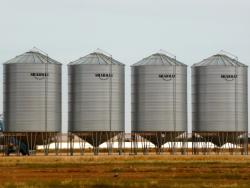
Tests Of Grain Aeration To Cool And Dry Combine-Harvested Wheat By F. L. Fenton, C. O. Swanson, And Orval C. French At Kansas State University In 1930-31 Showed Mechanical Ventilation To Be More Effective Than Natural Draft Ventilation. Mechanical Aeration Was Further Developed In The 1940's To Prevent Moisture Migration, Which Caused Wetting And Spoilage Of The Top Layers Of Stored Grain. Studies In 1944-45 By Usda Agricultural Engineers G. W. French And W. V. Hukill Cooperating With Iowa State University Proved That Mechanical Aeration Prevented Moisture Migration. G. H. Foster And R. N. Robinson, Usda Agricultural Engineers Cooperating With Purdue University, Demonstrated The Effectiveness Of Aeration In A Large Horizontal Grain Storage In 1949-50. The First Successful Grain Aeration System For Large Vertical Grain Silos Was Designed By Agricultural Engineer Meryl Todd For The Producers Rice Mill In Stuttgart, Arkansas And First Operated In The 1949-50 Season. Grain Aeration Is Essential To Maintaining An Adequate Year-Round Supply Of Quality Grain To Feed The World's People.


